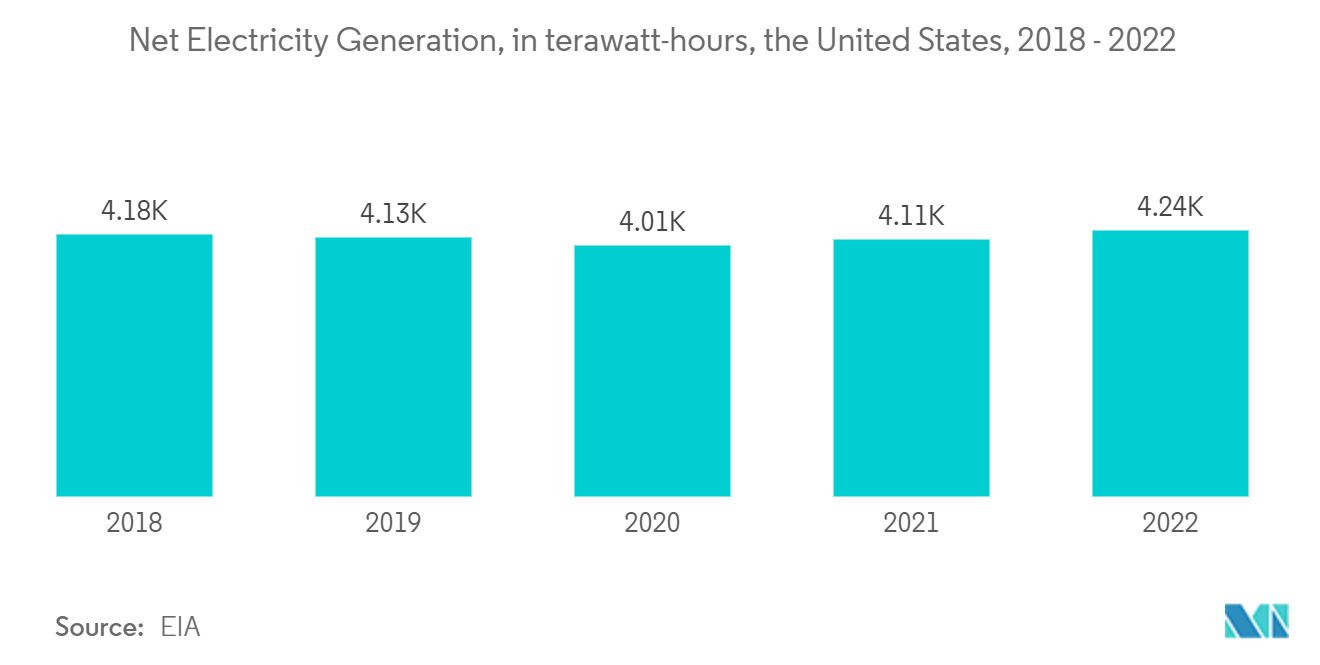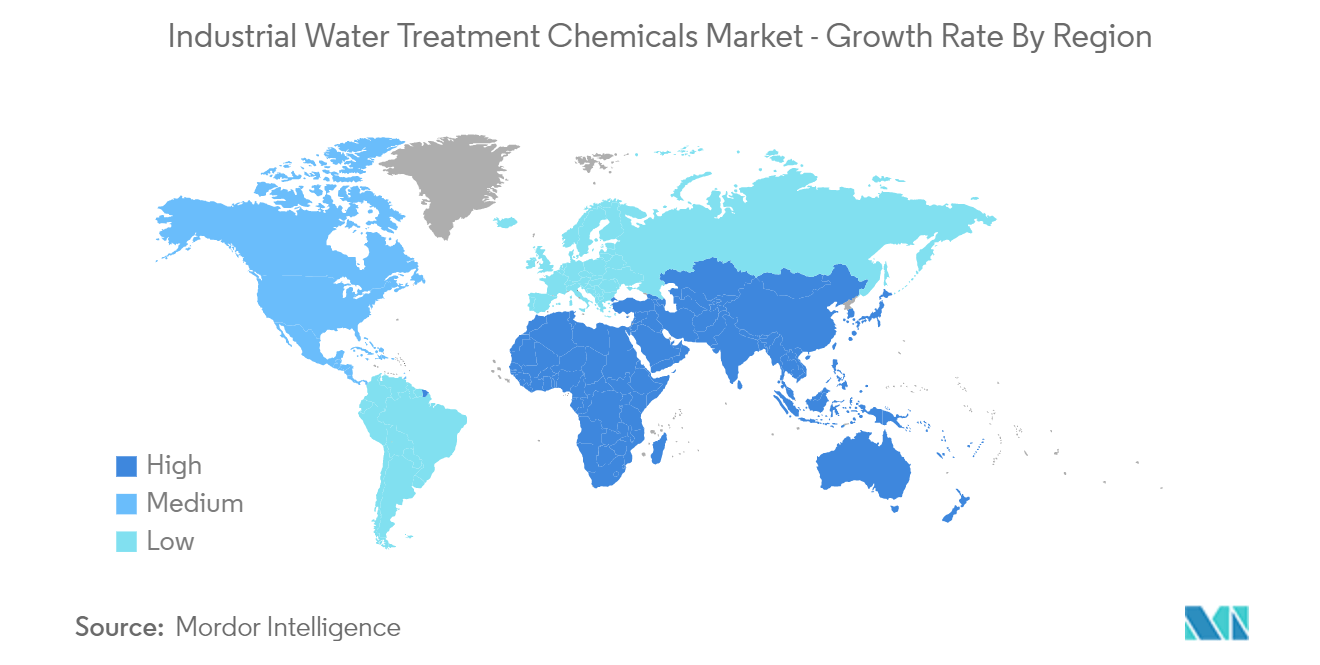Market Trends of Industrial Water Treatment Chemicals Industry
Power Industry to Dominate the Market
- Most power generation plants require water for their day-to-day operations. Nuclear and fossil fuel power plants typically consume nearly 190 billion gallons of water daily. Similarly, geothermal power plants need 2 billion gallons daily for operations. Hydropower plants use water directly to generate power.
- The electric power generation industry is one of the biggest water consumers worldwide. Water in the electric power generation industry is used in many ways, such as steam production for spinning turbines, humidifying airflow into gas turbines, and intercooler air in gas turbine plants. It is also used for steam injection for NOx control, as a heat transfer medium in some nuclear plants, condenser cooling in steam plants, and plant maintenance, including blow-down and hydraulic ash disposal.
- The electric power generation industry is one of the major sources of industrial wastewater. Their wastewater contains toxic metal impurities like lead, mercury, arsenic, chromium, and cadmium. These impurities can cause significant damage to the environment if not treated properly. Therefore, the electric power generation industry needs water treatment chemicals. For instance, according to the Energy Information Administration (EIA), the United States generated 4,243 terawatt-hours of electricity in 2022, which showed an increase of 3.3% compared to 2021. Therefore, an increase in electricity consumption is expected to create an upside demand for the industrial water treatment chemicals market from the country's power industry.
- Moreover, energy consumption in Germany in the first three months of 2023 was almost 7% below last year's due to high prices and a shrunk gross domestic product. For instance, primary energy consumption stood at 3,126 petajoules, a 6.8% reduction compared to the first quarter of 2022. Therefore, the decrease in electricity consumption is expected to affect the market's growth.
- All the factors above support the consumption of industrial water treatment chemicals.

Asia-Pacific to Dominate the Industrial Water Treatment Chemicals Market
- Asia-Pacific dominated the global industrial water treatment chemicals market share.
- China is an emerging economy and is the largest in terms of purchasing power parity and the second-largest economy in terms of nominal GDP in the world.
- The government of the country is promoting economic growth and urbanization. It will increase the demand for improvement in wastewater infrastructure, leading to an increased usage of water treatment chemicals.
- The major end-users are the country's municipal, chemical plants, food and beverages, oil and gas, power generation industry, etc. Moreover, most of the country's population relies on groundwater sources for drinking water, which are either untreated, mostly in rural areas, or improperly treated by municipal water suppliers. Therefore, the need for water treatment chemicals increases. Water treatment chemicals are used in boiler and cooling water treatment in different industries nationwide.
- The oil and gas water treatment chemicals are mainly used to treat wastewater produced as a byproduct during oil and natural gas exploration and downstream petroleum refining processes. For instance, natural gas consumption in China amounted to 33.5 billion cubic meters (bcm) in December 2022, a slight decrease compared to December 2021, when consumption amounted to 34.7 bcm. China's natural gas consumption peaked at 35 bcm during consideration in January 2022.
- Moreover, according to data released by the National Energy Administration, China's electricity consumption, a key indicator of the country's economic health, experienced an increase of 3.6% year-on-year (YoY) in the first quarter (Q1) of 2023. The total power usage in the country reached 2.12 trillion kilowatt-hours during the first quarter of 2023. Therefore, this is expected to create an upside demand for the industrial water treatment chemicals market from the country's power sector.
- Furthermore, according to the India Brand Equity Foundation (IBEF), India is expected to be one of the largest contributors to non-OECD petroleum consumption growth globally. India's consumption of petrol products stood at 183.32 MMT in April-January 2023. High-Speed Diesel was India's most consumed oil product, accounting for 38.84% of petroleum product consumption in 2022.
- In March 2022, the Board of IOCL approved plans to invest USD 932.6 million to develop the City Gas Distribution (CGD) network in India's 9 geographical areas (GAs). Therefore, the expansion of the oil and gas industry in the country is expected to create an upside demand for the industrial water treatment chemicals market.
- India is the third-largest producer and consumer of electricity worldwide, with an installed power capacity of 411.64 GW as of January 31, 2023. Moreover, in January 2023, the Union Cabinet (CCEA) approved an investment of USD 315 million (INR 2,614 crores) for SJVN's 382 MW Sunni Dam Hydro Project. These projects are expected to increase demand for the industrial water treatment chemicals market.
- Therefore, the water treatment chemicals market contains a high growth potential over the forecast period.

